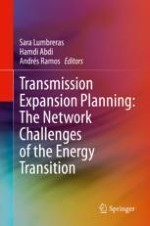2021 | OriginalPaper | Buchkapitel
4. Reduction Techniques for TEP Problems
verfasst von : Quentin Ploussard
Erschienen in: Transmission Expansion Planning: The Network Challenges of the Energy Transition
Aktivieren Sie unsere intelligente Suche, um passende Fachinhalte oder Patente zu finden.
Wählen Sie Textabschnitte aus um mit Künstlicher Intelligenz passenden Patente zu finden. powered by
Markieren Sie Textabschnitte, um KI-gestützt weitere passende Inhalte zu finden. powered by
